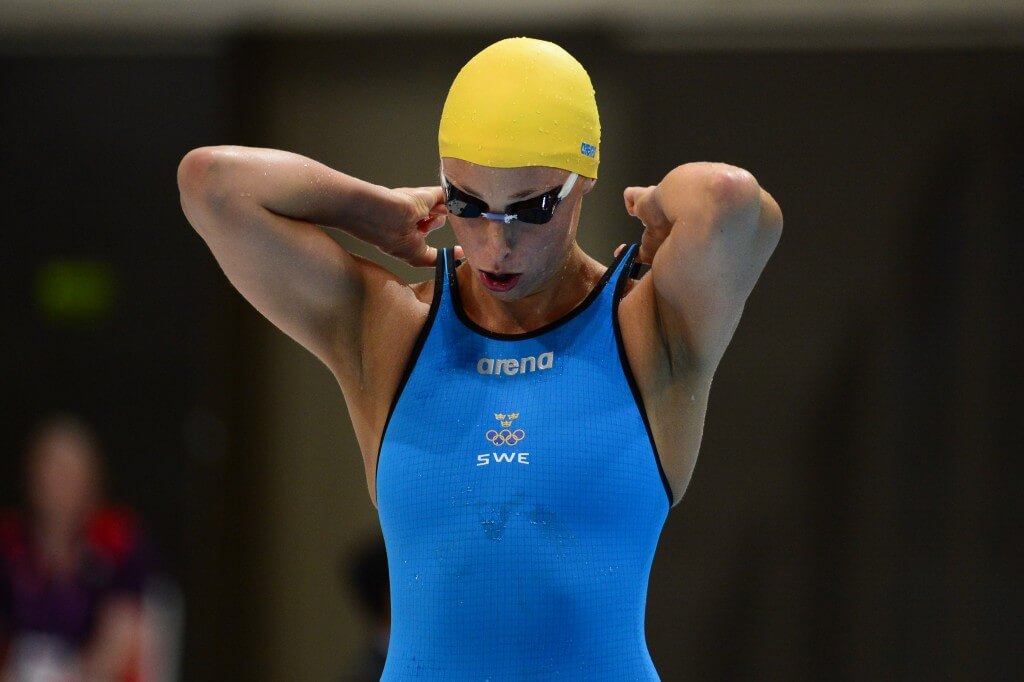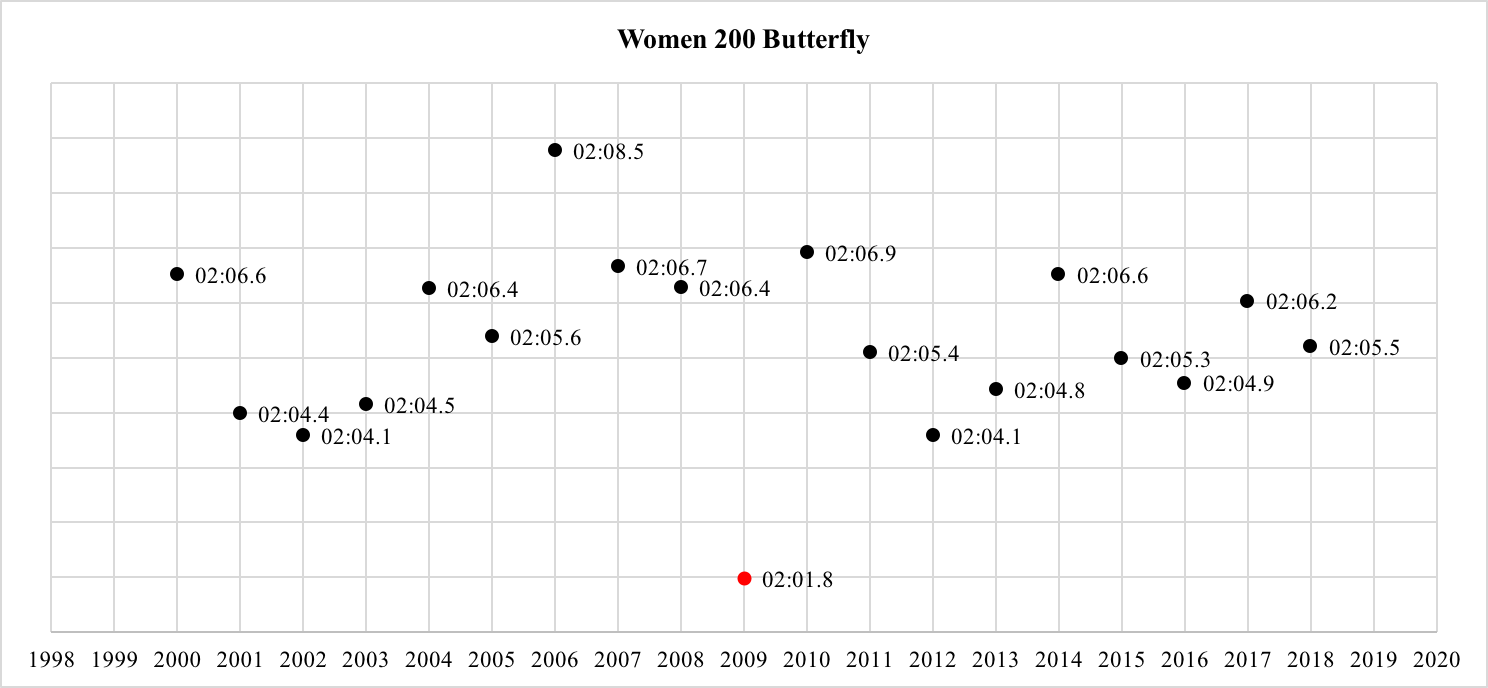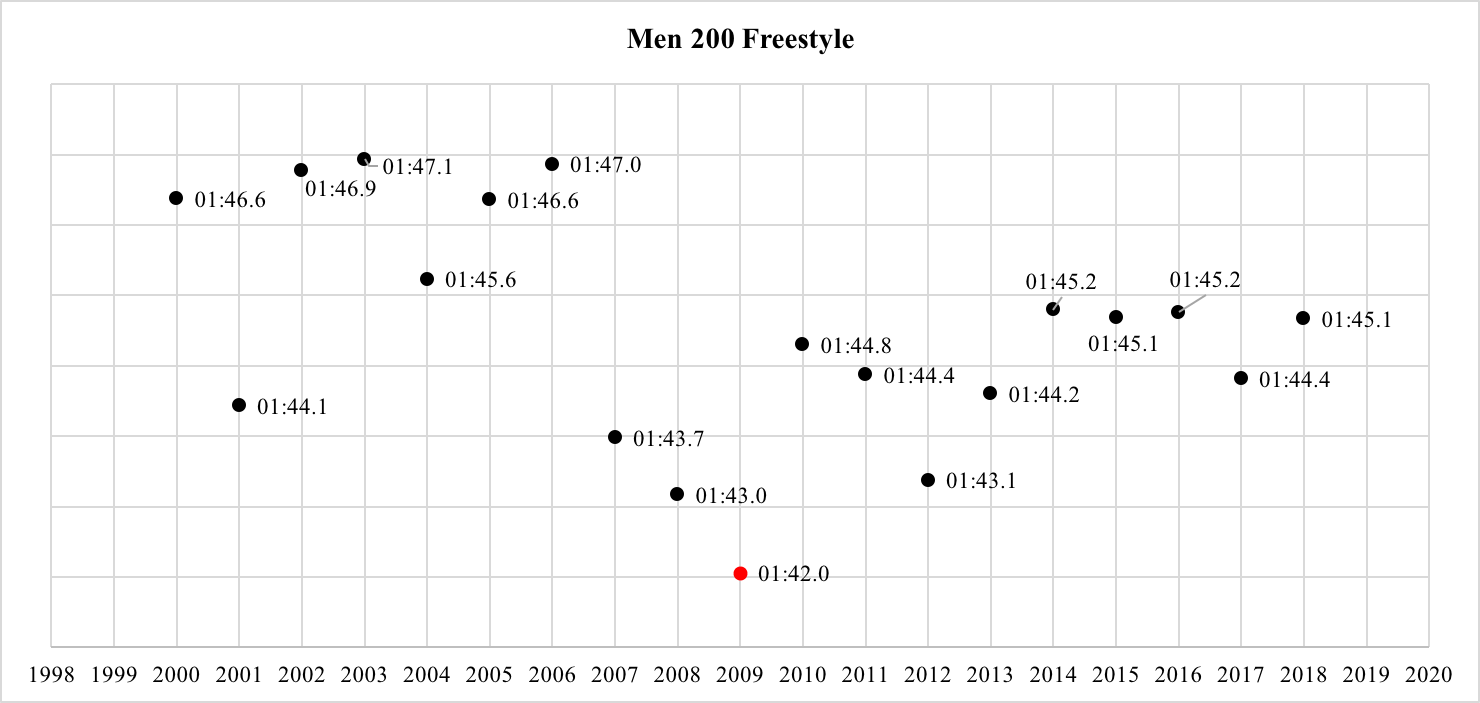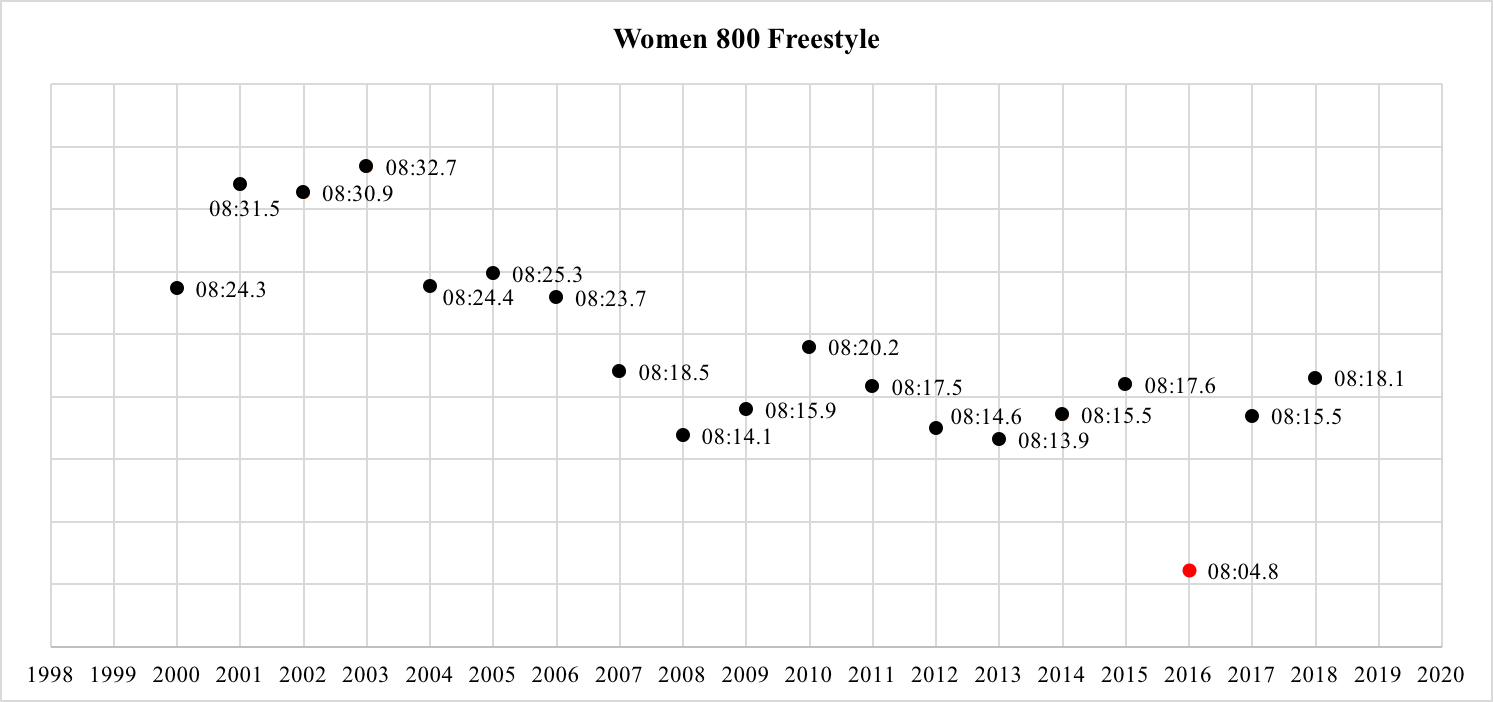Can World Records Supersede the Super-Suit Era?

By Giulia Filocca, Swimming World College Intern.
The Super-Suit Era
Crafted to enhance hydrodynamic performance, the sleek “rubber suit” truly revolutionized the sport of swimming as we know it: a cumulative total of 74 world records had been shattered after the 2008 Beijing Olympics, while 43 were obliterated at the 2009 World Championships in Rome. Speedo proceeded to flaunt that 98% of the medals awarded at the Water Cube were won with the LZR, a variant that took a sheer four years and 55,000 man-hours to produce.
In the run-up to the 2012 London Olympics, The Independent proclaimed that swimmers would find it near “impossible” to break world records following the ban on high-tech suits. “We’ve lost all the history of the sport,” lamented Bob Bowman, who feared the loss of thrill in the future of swimming.
Austrian Backstroker Markus Rogan shrewdly added, “It’s like deciding to play soccer one year with a rugby ball, then switching to a soccer ball.”

Photo Courtesy: Wally Skalij
The Post-Ban Era
Back in 2009, Fina’s unanimous decision to prohibit the polyurethane suits was thought to create an ‘insurmountable rift’ in the performance of elite athletes. Truth exists in this assertion, as 70% of men’s LCM world records originate from the heydays of the super-suit era.
Should we have stricken such unjust marks and started from ground zero? Will the existing records ever surrender to the men unaided by corset-like fabrics?
This never-ending suit saga aside, few world records have proven to be as untouchable as the men’s 200 freestyle, the women’s 200 butterfly and the women’s 800 freestyle. Set both during and after the high-tech era, these mind-boggling times will presumably persist for multiple generations to come. Exactly how startling is each record compared to all other top-times achieved in the event?
Women’s 200m Fly: 2:01.81

Nothing screams “outlier” more than Liu Zige’s 200m fly, a truly mind-blowing record that fell at the least anticipated of times. Zige prevailed over the field at the 2009 11th National Games of China, edging out the competition with a front-halved 58.08/63.73 race.
Only Australian Jessica Schipper has come remotely close to contending this mark, posting a time 1.60 seconds slower than her Chinese rival in 2009. To place this swim into perspective, Zige’s 2:01.81 swim is only marginally slower than the 2:01.87 world record set by the legendary Mark Spitz in 1972.
Her 200 butterfly time is also a mere 10.31 seconds shy of legendary Michael Phelps’ male world record, a relative difference that stands at 12.70 seconds for the 200 backstroke and 12.20 seconds for the 200 breaststroke.
Mireia Belmonte proved that the 200 butterfly is a different ball-game at the SCM level, clocking a time of 1:59.61 at the 2014 World Championships to shatter Zige’s former mark of 2:00.70.
Paradoxically, 2016 Olympic Gold Medalist Belmonte has never dipped under the 2:04.00 barrier in a LCM setting. In fact, Zige herself was never able to replicate her record-breaking swim following the textile ban: her fastest held at 2:04.40 in 2010. Does this not prove the sheer incontestability of Zige’s record, plausibly the most unattainable one in the books?
Men’s 200m Free: 1:42.00

Since 2012, Frenchman Yannick Agnel has been the only man to dip under the insurmountable 1:44.00 barrier. This was a truly historic feat, as only three other men in history ‒ Michael Phelps, Paul Biedermann and Danila Izotov ‒ have successfully done so.
Sun Yang came within reach at the 2017 World Championships, but his time of 1:44.39 remained a startling 2.39 seconds slower than Biedermann’s 2009 World Championships swim. More stupefying than the race itself was the controversy that surrounded it: Biedermann, who slashed four-seconds off his 1:46.00 time at the 2008 Beijing Olympics, raised suspicion and resentment while wearing the Arena X-Glide, one of polyurethane suits that transformed swimmers into sleek kayaks.
The upset centered around the second-place finish of Michael Phelps, who wore the then inferior Speedo LZR Racer and was outrun by the unheralded German’s final split of 25.70. This marked Phelps’ first major individual defeat since 2005, doled out by a swimmer who had hardly been a threat before breaking Ian Thorpe’s 400 freestyle record two days earlier.
This “technological doping” quarrel aside, Biedermann’s awe-inspiring performances have undoubtedly cemented his position as one of the most dominant male swimmers of all time.
Women’s 800m Free: 8:04.79

Nineteen-year-old Katie Ledecky sent shock waves across the sporting world after trimming 9.31 seconds off of Rebecca Adlington’s 800m freestyle at the 2016 Rio Olympics. In a sport typified by its imperceptibly close finishes, Ledecky touched 11.4 seconds ahead of her closest competitor to clock a blistering time of 8:04.79.
At the same Olympics, this swim would have ranked her 17th in the Women’s 4×200 freestyle relay behind Spain and 4th in the individual 400 freestyle at the halfway mark (4:01.98). Clearly no athlete has edged perceptibly close to this time, with the second- and third-fastest swims in history registered in the 8:14-8:15 range.
What makes this time all the more impressive is that it was accomplished without the magical properties of the snake-like tech suit. Had Ledecky raced a decade earlier, a sub-800 swim would have been a conceivable possibility. This would have placed her in the same celestial orbit as Michael Phelps and Mark Spitz, undoubtedly the top elite athletes of their times.
At present, the Stanford sophomore reigns uncontested in the run-up to the 2020 Tokyo Olympics: she owns the top 12 all-time performances in this event and has lowered her own world record four times since 2013. Will her record-breaking run continue unabated?
The Test of Time
We have yet to see records fall as quickly as they did during the reign of the super-suit. The evolution of swimming now relies heavily on physical and mental training practices, making the competitive edge that much more difficult.
During this lead-up to the summer Pan Pacific Championships, let’s hope to see some rising stars touch the wall in record-breaking fashion!
All commentaries are the opinion of the author and do not necessarily reflect the
views of Swimming World Magazine nor its staff.




One day I will be a best swimmer
I will be a best athlete
Raffaella guarda chi ha scritto l’articolo…
Fabulously written article 🙂 🙂 (Y)
Great! very well written Giulia. well done!
This article was suggested to me, and I really enjoyed the density of information and how carefully and coherently it was presented. I don’t know a lot about swimming, but it was easy to follow . I was especially intrigued by the graphs and outlier times during the “technological doping” era. As a casual observer, it was also interesting to see the singularity and the disparity in those times. I could not help but wonder if other types of enhancements helped achieve those times. Great job! Keep up the good work.